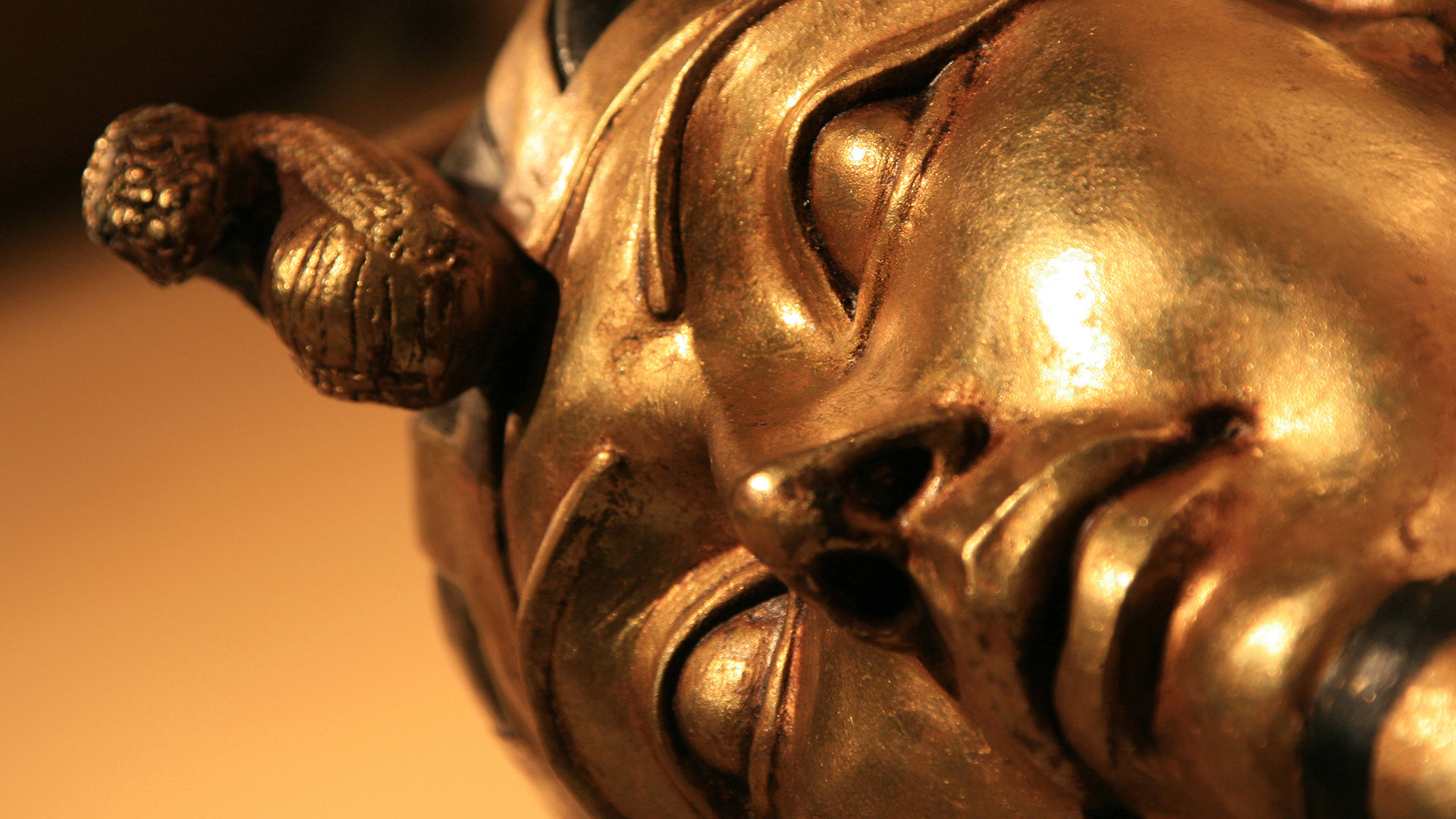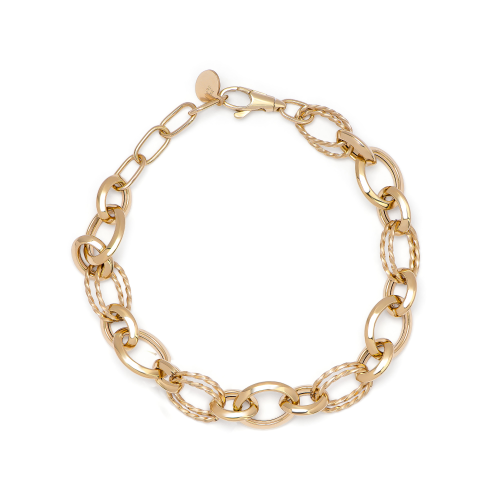The Mystery of Tutankhamun's Gold Mask

The Legend of Tutankhamun's Gold Mask
Tutankhamun's gold mask is an enduring symbol of the wealth, power, and artistic excellence of ancient Egypt. Crafted over 3,300 years ago during the New Kingdom period, this stunning artifact has fascinated historians, archaeologists, and art enthusiasts alike. Made entirely of solid gold, the mask is a testament to the exceptional craftsmanship and technical skill of ancient Egyptian artisans.
The mask was discovered in 1922 by British archaeologist Howard Carter in the tomb of Tutankhamun, located in the Valley of the Kings near Luxor, Egypt. The tomb, designated KV62, had remained undisturbed for over 3,000 years, providing a remarkable glimpse into the funerary practices and beliefs of ancient Egypt.
Standing over 21 inches tall and weighing approximately 24 pounds, Tutankhamun's gold mask covers the head and shoulders of the pharaoh's mummified remains. Its lifelike features and intricate detailing reflect the idealized image of the youthful king, with finely crafted eyebrows, almond-shaped eyes, and a slender nose. The mask's serene expression and softly smiling lips convey a sense of eternal tranquility, embodying the ancient Egyptian concept of the afterlife as a journey to the realm of the gods.
Tutankhamun: The Boy King of Ancient Egypt
known as the "Boy King" of ancient Egypt, rose to power at a remarkably young age, ascending to the throne around 1332 BC, at just nine years old. Born to the pharaoh Akhenaten and his wife, Queen Kiya, Tutankhamun was originally named Tutankhaten, which reflected his family's devotion to the sun god, Aten. However, upon assuming the throne, he changed his name to Tutankhamun, signifying his allegiance to the god Amun.
Tutankhamun's reign was relatively short, lasting approximately ten years, during which time he oversaw a period of restoration and religious reform. He reversed the radical religious policies implemented by his predecessor, Akhenaten, who had promoted the exclusive worship of the sun god, Aten, and had abandoned traditional Egyptian deities. Tutankhamun reinstated the worship of the traditional gods, particularly Amun-Ra, and initiated the restoration of temples and monuments that had fallen into disrepair during Akhenaten's reign.
Despite his efforts to stabilize the kingdom and restore religious practices, Tutankhamun's reign was overshadowed by political upheaval and internal strife. It is believed that he died unexpectedly around the age of eighteen or nineteen, under mysterious circumstances. The exact cause of his death remains uncertain, with theories ranging from illness to assassination.
The Significance of Gold in Ancient Egypt
In ancient Egypt, gold held unparalleled importance, permeating every aspect of society with its divine aura and symbolic power. Known as the "flesh of the gods," gold was revered as a sacred metal closely associated with the sun god Ra, the primary deity in the Egyptian pantheon. Ra was believed to traverse the sky each day in a golden boat, symbolizing the life-giving power of the sun and its role in sustaining all life on earth.
Gold was seen as a manifestation of the sun's radiant energy and was imbued with magical properties that endowed it with protective and transformative qualities. It was believed to possess the ability to ward off evil spirits, purify the soul, and facilitate the journey of the deceased to the afterlife. As such, gold played a central role in funerary rituals and was buried with the deceased to ensure their safe passage into the next world.
The Discovery of Tutankhamun's Tomb
Howard Carter's discovery of Tutankhamun's tomb in 1922 marked one of the most significant archaeological finds of the 20th century. The tomb, located in the Valley of the Kings near Luxor, Egypt, contained a treasure trove of artifacts, including the iconic gold mask that adorned the pharaoh's mummified remains. Carter's meticulous excavation revealed a wealth of insights into ancient Egyptian burial practices and royal funerary customs.
Unveiling the Magnificence: Tutankhamun's Gold Mask
Tutankhamun's gold mask is a masterpiece of ancient craftsmanship, crafted from solid gold and adorned with precious gemstones and intricate detailing. Standing over 21 inches tall and weighing approximately 24 pounds, the mask covers the head and shoulders of the pharaoh's mummy, serving as a protective amulet and symbol of eternal life. The serene expression and finely crafted features of the mask reflect the idealized image of the youthful pharaoh.
Crafting the Masterpiece: Techniques and Materials
The creation of Tutankhamun's gold mask required exceptional skill and craftsmanship. Ancient Egyptian artisans utilized traditional techniques such as hammering, soldering, and engraving to shape the solid gold sheet into its final form. The mask's intricate details, including the delicate facial features and headdress adorned with inlaid gemstones, were achieved through painstaking precision and artistry. Gold was sourced from Egypt's Eastern Desert mines and refined to achieve the desired purity for crafting royal artifacts.
Symbolism and Mysteries of the Gold Mask
Tutankhamun's gold mask is a masterpiece of ancient Egyptian artistry, rich in symbolism and imbued with profound significance. Crafted from solid gold and adorned with precious gemstones, the mask serves as a protective covering for the pharaoh's mummified remains, symbolizing his journey into the afterlife and his transformation into a divine being.
The mask's golden hue represents the eternal nature of the pharaoh's soul and his status as a god in the afterlife. Gold, with its incorruptible nature and radiant brilliance, was associated with the sun god Ra, who was believed to guide the souls of the deceased to the afterlife. Thus, the gold mask not only served as a protective amulet but also as a symbol of divine kingship and eternal life.
Legacy and Cultural Impact: Tutankhamun's Gold Mask Today
Tutankhamun's gold mask continues to captivate the imaginations of people worldwide, serving as a symbol of ancient Egypt's rich cultural heritage and artistic legacy. Since its discovery, the mask has toured museums around the globe, attracting millions of visitors and inspiring awe and wonder. Today, replicas and reproductions of the mask adorn everything from jewelry and home decor to fashion accessories, keeping the legacy of Tutankhamun and his golden treasures alive for future generations to admire and appreciate.

Our Promise
Fast shipping
Receive your jewelry in maximum 3 days.
Return guaranteed
Requesting a return is quick and easy.
Ethical Sourcing
Ethically Sourced Materials
Payments
Buy in the most convenient way for you.







